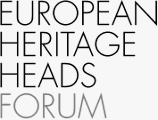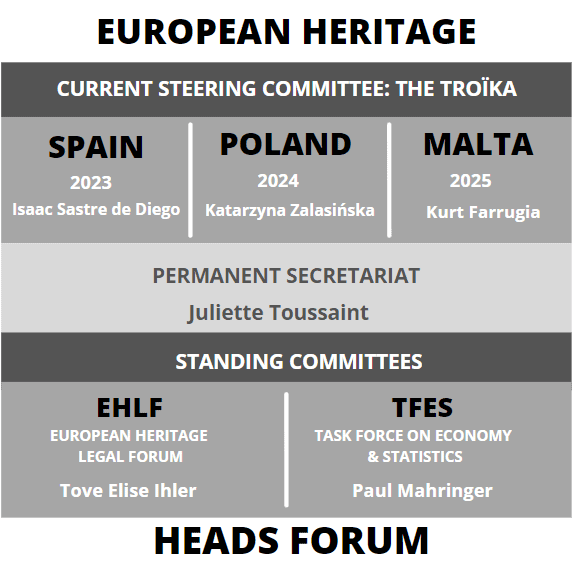Cultural Heritage & Digital Transformation
ROMANIA
We are currently developing a national strategic framework for the adoption of innovative technologies in the public administration in Romania.
Culture has been designated one of the priority areas to be covered by the future framework, and within the field of culture, cultural heritage is the focus of our work now. The first phase of this work includes a comparative analysis with similar policy frameworks, programmes and tools already in use or under development across Europe. We intend to address the broad issue of digital transformation in the field, including digitization, access to cultural heritage, digital processes and new developments that may be triggered and/or enabled by the transition to digital.
In this context, may I ask for your advice and support for identifying such documents and tools in your country, along with a possible view on the potential for improvements.
FLANDERS
The open data policy of the Flemish Government aims to give information from the government back to society according to the principles of open data. The Flemish government wants to be an open government that is transparent and participative. Open data play a role in this endeavour. After all, the government has an enormous wealth of qualitative and reliable data that can be opened up to other governments, citizens, companies and organisations. Not only does this increase transparency, the use of open data also paves the way for innovation and the development of new products or services.
In line with this general vision of the Flemish Government, Flanders Heritage has consistently been in favour of publishing open data and kept abreast with developments in this field. When it comes to using, maintaining and building software, we invest heavily in open source software. Until a few years ago we were a typical consumer of open source software, without contributing much ourselves. A few years ago we diverged from this path, created a Github account and started opening up software we had written that might benefit other organisations dealing with cultural heritage, other government agencies or anyone else interested in open source software. Here you can find some of these projects.
We assimilate innovation to improve the preservation of heritage, to enhance decision-making, to support the management or to provide information to a broad public. To this end, we are mixing new technologies or new paradigms with our care and responsabilities for heritage. Here we focus on a few tangible results of this innovation driven approach that demonstrate how well heritage, technology and digitisation match.
Flanders Heritage has a geoportal since 2013. Although it has grown and transformed over the years, the basic goals and the architectural design have remained largely unchanged. This is an important online platform for us.
Flanders Heritage, the Flemisch agency for immovable heritage, focusses on being a proactive and customer-centered administration. By working with local governements, organisations and other partners and by digitisation of our services we try to bring the care for immovable heritage closer to citizens and actors on the field.
Our information team manages and creates information systems that support the daily operations of the agency.
So we are also fully committed to digitisation in a lot of our procedures going from applying for a permit or a subsidy to archaeological digital archiving.
Especially concerning archeology, Flanders Heritage has made a lot of steps forward in the previous years.
An overview of the current state of archaeological digital archiving in Flanders (Belgium) can be found in this article. It describes how the archaeological sector delivers data and how these are processed in a fully digital way. The article briefly outlines the legally defined stakeholders and actors through which archaeological fieldwork is regulated and carried out in Flanders. It subsequently describes related digital documentation and archiving practices, and guidelines. This is followed by a discussion on compliance with the FAIR Guiding Principles, and the article concludes with notes on the past and future of archaeological digital archiving in Flanders.
I hope this gives you an overview on the digital transformation in the immovable heritage field in Flanders. Flanders Heritage does not have a dedicated strategy or programme on this topic but we are certainly willing to inform you more on our experiences if, based on the information above, this could help you in your work. Do not hesitate to contact me in case you want some clarifications on all of the information above or if you want to get in contact with the director of our information team for further details.
FLANDERS 2
Note in advance:
In Flanders cultural heritage (movable and intangible heritage) and immovable heritage each have their own minister, administration, events, decrees and subsidy lines. Cultural heritage is a community matter and is monitored by the Department of Culture, Youth, Sport and Media. Immovable heritage is a regional matter and is monitored by the Flanders Heritage Agency, within the policy domain of Environment.
Digital Transformation in the field of Cultural Heritage in Flanders
In the field of Cultural Heritage (movable and intangible heritage) there’s a strategy on digital transformation: https://www.vlaanderen.be/cjm/nl/cultuur/digitale-cultuur/visie-en-beleid (information in Dutch). For further information on this strategy we refer to our colleagues in the Departement of Culture, Media and Youth mentioned on the website: Hans Van der Linden (hans.vanderlinden@vlaanderen.be) and Leen Driesen (leen.driesen@vlaanderen.be).
Digital Transformation in the field of Immovable Cultural Heritage in Flanders
There is no formal strategy for digital transformation for immovable heritage (archaeology, built heritage, cultural landscapes) in Flanders, but there’s been a long standing tradition of digital transformation in Flanders.
When transforming the information architecture surrounding heritage, it makes sense to start with the heritage itself. In Flanders this is the Inventory of Immovable Cultural Heritage, https://inventaris.onroerenderfgoed.be , a website that contains all the inventories and all the heritage designations (different types of listings). This is the website everyone consults when they want to know what is and what isn’t heritage.
While this used to be the unique responsibility of the regional level (Flanders), some of these tasks are now being delegated to the local level.
Closely related to this inventory are an image database (https://beeldbank.onroerenderfgoed.be ), a database of legal documents about this heritage ( https://besluiten.onroerenderfgoed.be ) and a thesaurus (https://thesaurus.onroerenderfgoed.be ). All tools that support the inventory by making it possible to visualize the cultural heritage, to prove why something is listed and to make it possible to differentiate between all the words and terms used in our sector. All of them are tools that have proven invaluable over time. All these tools mainly serve to answer the questions about what things are heritage and why. This is essential knowledge to build upon for further projects. For if you do not if a building is listed, how can someone know if they need to apply for a permit to renovate it?
Another tool that grew out of the inventory, is our geoportal (https://geo.onroerenderfgoed.be). This is a website that contains all geospatial information regarding cultural heritage. Here the inventories and databases of listed heritage are presented geographically on a simple Google Maps interface. This enables any user, not just the GIS experts, to quickly visualise where in Flanders heritage is located. As the name immovable cultural heritage already reveals, location is everything for this kind of heritage.
Once you know where your heritage is, it’s possible to transform the procedures dealing with this heritage. In our case, these are procedures for applying for a grant to renovate heritage or to apply for permission to undertake certain actions. For these, public application forms where added to our loket onroerend erfgoed (https://loket.onroerenderfgoed.be ), a central database where our clients, the public,can start their transactions with us or with their local government where needed.
The prime example of these interactions between our organisation and our clients, is the so-called Archaeoportal, a part of the loket onroerend erfgoed. In 2016 new legislation for immovable cultural heritage was created, with a completely revised section surrounding archaeology. This new legislation was created in an digital-friendly way that enabled rapid digital transformation. This archaeoportal enables the commercial and academic archaeological sector to work in a fully digital way and leads to their reports being almost immediately available to the sector and the general public. It is considered our most successful digital transformation and has underlined that digital transformation needs to go hand in hand with process transformation and legal transformation. It is essential to not just digitize current procedures, but to improve them with digital applications in mind.
Some further reading that might prove informational:
– A general purpose blog post on different projects we were working on: https://onroerenderfgoed.github.io/posts/2019/ilucidare/
– An academic article about transforming our old analog inventory to a digital system: https://doi.org/10.1108/JCHMSD-01-2016-0004 (behind a paywall) or a very similar publication: https://doi.org/10.5194/isprsannals-II-5-W3-323-2015 (open access)
– An academic article about thesaurus construction: https://doi.org/10.5194/isprs-annals-IV-2-W2-151-2017
– An academic article about the archaeoportal and how the sector was transformed: https://doi.org/10.11141/ia.58.7
NORWAY
The Norwegian Directorate for Cultural heritage has recently developed a digital strategy for the management of cultural environments. It will be published soon, but unfortunately only in Norwegian for the time being. Once it is published I will be happy to share it with our Romanian colleagues. If there are particular aspects they are interested in, we can provide a short summary in English.



0 Comments